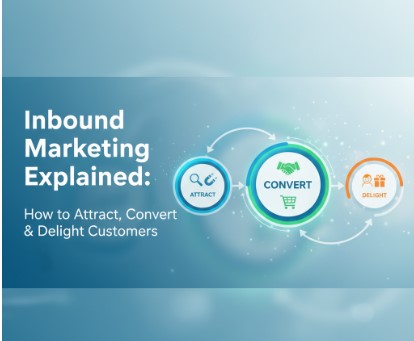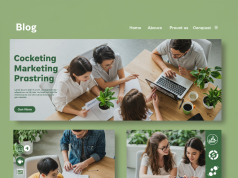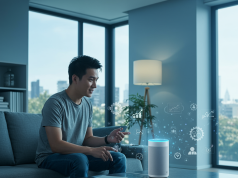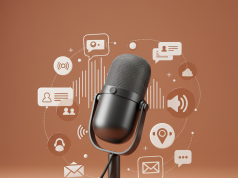Marketing often feels like a balancing act. On one hand, you need to reach new audiences and grow your business. On the other, nobody likes being interrupted by aggressive ads or pushy sales calls. So, how do you get your message in front of the right people without alienating them? The answer is inbound marketing.
This approach flips the traditional marketing model on its head. Instead of broadcasting your message to a wide, often uninterested audience, inbound marketing focuses on drawing potential customers to you. It’s about creating valuable content and experiences that align with their interests and needs, building trust and establishing your brand as a helpful authority.
By understanding the principles of inbound marketing, you can create a sustainable strategy that not only attracts visitors but also converts them into loyal customers and advocates for your brand. This guide will walk you through the entire inbound marketing methodology, explaining each stage and providing actionable strategies you can implement to start seeing results.
What Is Inbound Marketing?

Inbound marketing is a business methodology that attracts customers by creating valuable content and experiences tailored to them. While traditional (or outbound) marketing involves interrupting your audience with content they don’t always want, inbound marketing forms connections they are looking for and solves problems they already have.
Think of it this way:
- Outbound Marketing: TV commercials, billboard ads, cold calling, print ads, and email blasts. These are “push” methods where a company pushes its message onto an audience.
- Inbound Marketing: Blog posts, SEO, social media content, e-books, and webinars. These are “pull” methods that pull people in by providing value.
The core idea is to meet your audience where they are. By providing helpful content that addresses their pain points and questions, you naturally draw them to your brand. This creates a more positive and organic interaction, fostering goodwill and long-term loyalty.
The Inbound Marketing Methodology: The Flywheel Model
The inbound methodology is often visualized as a flywheel, which represents the continuous and self-sustaining momentum you build with your customers. The model was updated from the traditional funnel because it better illustrates how delighting customers can fuel your growth. When you deliver an excellent experience, your customers become advocates who help attract new prospects.
The flywheel is divided into three stages: Attract, Engage, and Delight.
![Image of the Inbound Marketing Flywheel with Attract, Engage, and Delight stages]
Let’s look at each stage and the strategies that power them.
Stage 1: Attract
The first stage is all about drawing the right people to your brand. These are your ideal customers—the ones who are actively searching for solutions to problems your business can solve. The goal here is not just to get any traffic, but to get qualified traffic.
To do this, you need to create and share content that provides value and answers their questions.
Key Strategies for the Attract Stage
Search Engine Optimization (SEO)
SEO is the foundation of the Attract stage. It’s the process of optimizing your website and content to rank higher in search engine results for specific keywords related to your business. When a potential customer searches for “how to fix a leaky faucet,” and you’re a plumbing company, you want your article on that exact topic to appear first.
- Keyword Research: Identify the terms and phrases your target audience uses to find solutions like yours. Use tools like Ahrefs, SEMrush, or even Google Keyword Planner.
- On-Page SEO: Optimize individual web pages by including your target keywords in titles, headings, meta descriptions, and throughout the content.
- Technical SEO: Ensure your website is fast, mobile-friendly, and easy for search engines to crawl.
Content Marketing
Content is the fuel for your inbound marketing engine. By creating high-quality, relevant content, you establish your brand as a trusted resource.
- Blogging: A blog is one of the most effective ways to attract new visitors. Write articles that address your audience’s pain points, answer their questions, and offer practical advice.
- Pillar Pages and Topic Clusters: Organize your content around core topics. A “pillar page” is a comprehensive guide on a broad subject, which links to more specific “cluster” blog posts. This structure signals your expertise to search engines and helps readers find information easily.
- Video Content: Create tutorials, product demos, or educational videos to engage a wider audience on platforms like YouTube.
Social Media Marketing
Share your valuable content on the social media platforms where your target audience spends their time. Use social media not just to promote, but to engage in conversations and build a community around your brand. Each platform has its own strengths, so tailor your content accordingly. For example, LinkedIn is great for B2B content, while Instagram is better for visual storytelling.
Stage 2: Engage
Once you’ve attracted visitors, the next step is to engage them. The goal of this stage is to convert visitors into leads by building a relationship and gathering their contact information. This is about starting a conversation and offering solutions that align with their needs.
You want to make it as easy as possible for them to learn more and interact with your business.
Key Strategies for the Engage Stage
Calls-to-Action (CTAs)
A CTA is a button or link that prompts a visitor to take a specific action, like “Download Our Free Guide” or “Sign Up for a Webinar.” CTAs should be clear, compelling, and strategically placed on your website and in your content.
Landing Pages
When a visitor clicks a CTA, they should be taken to a landing page. This page is designed for one purpose: to capture lead information in exchange for an offer. A good landing page is free of distractions and clearly communicates the value of what you’re offering.
Forms
Forms are what you use on your landing pages to collect information. Keep your forms as simple as possible. Only ask for the information you truly need. A long, complicated form can deter people from converting. You can always gather more information later.
Lead Nurturing and Email Marketing
Not every lead is ready to buy immediately. Lead nurturing is the process of building relationships with leads through targeted email campaigns. Send them relevant content, helpful tips, and personalized offers to guide them through their decision-making process.
Live Chat and Chatbots
Engage website visitors in real-time with live chat or automated chatbots. These tools can answer common questions, qualify leads, and connect them with the right person on your team, providing instant support.
Stage 3: Delight
Inbound marketing doesn’t stop once you’ve made a sale. The Delight stage is about continuing to provide value to your customers, turning them into happy promoters of your brand. Remember the flywheel? Delighted customers create the momentum that attracts new business.
Excellent customer service is essential here, but you can go even further.
Key Strategies for the Delight Stage
Customer Support
Provide timely and helpful support to your customers whenever they need it. This includes having a robust knowledge base, multiple support channels (email, phone, chat), and a customer-centric attitude across your entire company.
Surveys and Feedback
Actively listen to your customers. Use surveys, like the Net Promoter Score (NPS), to gather feedback on their experience. Use this information to improve your products, services, and overall customer journey. Showing that you value their opinion helps build loyalty.
Loyalty Programs and Exclusive Content
Reward your loyal customers with special offers, early access to new products, or exclusive content. This makes them feel valued and encourages them to continue doing business with you.
Community Building
Create a space for your customers to connect with each other and your brand. This could be a private Facebook group, a dedicated forum, or exclusive online events. A strong community fosters a sense of belonging and turns customers into brand advocates.
Getting Started with Inbound Marketing
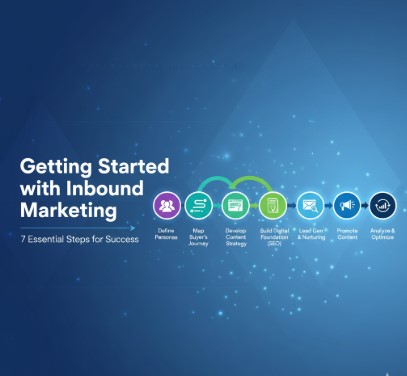
Implementing a full-scale inbound marketing strategy can feel overwhelming, but you don’t have to do it all at once. Start small and build momentum over time.
- Define Your Ideal Customer: Create detailed buyer personas to understand who you’re trying to reach.
- Start a Blog: Begin by answering the most common questions your customers ask.
- Create One Offer: Develop a simple e-book or checklist and create a landing page to capture leads.
- Promote Your Content: Share your blog posts and offer on one or two social media channels.
- Measure Your Results: Track your website traffic, conversion rates, and leads to see what’s working.
By consistently applying the principles of Attract, Engage, and Delight, you’ll create a powerful marketing engine that fuels sustainable growth for your business.

